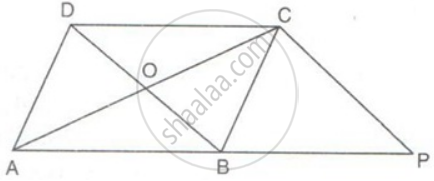Advertisements
Advertisements
प्रश्न
ABCD is a parallelogram. P and T are points on AB and DC respectively and AP = CT. Prove that PT and BD bisect each other.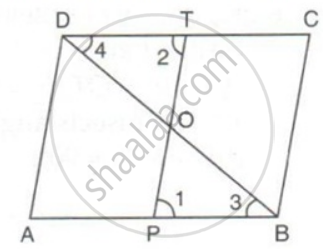
उत्तर
Join AC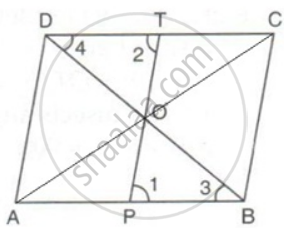
Since AC and BD are diagonals of a parallelogram, AC and BD bisect each other.
⇒ OA = OC and OD = OB ........(i)
AP = CT
But AB = CD
⇒ PB = DT
In ΔDOT and ΔPOB,
PB = DT
∠1 =∠2 ...(alternate angles since AB || CD)
∠3 = ∠4 ...(alternate angles since AB || CD)
Therefore, ΔDOT ≅ ΔPOB
Hence, OT = OP ........(ii)
From (i) and (ii)
OD = OB and OT = OP
Therefore, PT and BD bisect each other.
APPEARS IN
संबंधित प्रश्न
ABCD is a parallelogram. P and Q are mid-points of AB and CD. Prove that APCQ is also a parallelogram.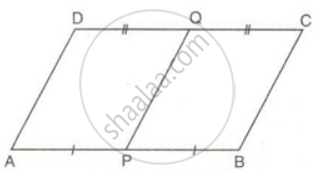
PQRS is a parallelogram. PQ is produced to T so that PQ = QT. Prove that PQ = QT. Prove that ST bisects QR.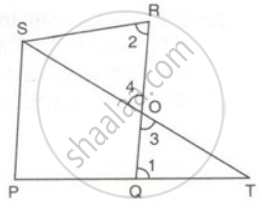
ABCD is a rectangle with ∠ADB = 55°, calculate ∠ABD.
PQRS is a parallelogram. T is the mid-point of RS and M is a point on the diagonal PR such that MR = `(1)/(4)"PR"`. TM is joined and extended to cut QR at N. Prove that QN = RN.
In a parallelogram PQRS, M and N are the midpoints of the opposite sides PQ and RS respectively. Prove that
RN and RM trisect QS.
ABCD is a trapezium in which side AB is parallel to side DC. P is the mid-point of side AD. IF Q is a point on the Side BC such that the segment PQ is parallel to DC, prove that PQ = `(1)/(2)("AB" + "DC")`.
In the given figure, PQRS is a parallelogram in which PA = AB = Prove that: SAQB is a parallelogram.
Prove that the diagonals of a square are equal and perpendicular to each other.
PQRS is a parallelogram and O is any point in its interior. Prove that: area(ΔPOQ) + area(ΔROS) - area(ΔQOR) + area(ΔSOP) = `(1)/(2)`area(|| gm PQRS)
In the figure, ABCD is a parallelogram and CP is parallel to DB. Prove that: Area of OBPC = `(3)/(4)"area of ABCD"`